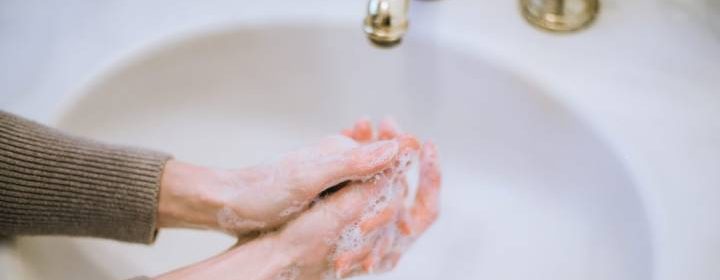When coronavirus comes home: How to take care of an infected person

If someone in your household is diagnosed with the novel coronavirus, do you know how to care for them while still protecting yourself?
In mild cases, it’s possible that your family member may have few or no symptoms — but that doesn’t mean they’re not contagious.
That’s why, according to infectious disease expert Dr. Isaac Bogoch, it’s critical that the sick person self-isolates as much as possible.
If diagnosed, Canadians are required to self-isolate for roughly 14 days, or until you receive approval to leave your home from a public health official.
“It is crucial that individuals follow quarantine and self-isolation recommendations properly to prevent transmission of COVID-19 to others in the home setting or in the community,” the Public Health Agency of Canada (PHAC) says on its website.
For Bogoch, this means limiting contact with others where possible.
Self-isolation
“Physical separation between the infected person and everyone else is ideal.”
There are several other steps you should take to mitigate the risk of transmission during this time.
First, designate one person — rather than multiple — to tend to the ill individual, said Bogoch. PHAC supports this advice.
“Only one healthy person should provide care,” the agency says on its website. This should not be someone who is considered to have a higher risk of serious illness from COVID-19 — namely, the elderly and people with chronic medical conditions or compromised immune systems.
[ Sign up for our Health IQ newsletter for the latest coronavirus updates ]
“Do not share personal items with the ill person, such as toothbrushes, towels, bed linen, utensils or electronic devices.”
Frequent, thorough cleaning
Bogoch recommends frequently and thoroughly cleaning surfaces in any shared spaces, like the kitchen and the bathroom.
“Keep these areas as clean as possible,” Bogoch said. He says any standard household cleaners will do the trick.
This includes toilets, laundry containers, bedside tables, doorknobs, phones and television remotes.
According to PHAC, any masks, gloves and other contaminated items used to care for the person should be placed in a “lined container” to be disposed of with other household waste.
Any clothing and linens used by the sick person can be washed with other laundry, and regular laundry soap and hot water (60 to 90 C) is sufficient.
Protect yourself
This one of the few times when wearing a mask has been proven to be effective to protect others from catching the virus.
“This is where mask-wearing will likely have the greatest impact if used correctly.”
It’s also crucial to practise “impeccable hand hygiene” in this situation, Bogoch said. This goes for both the infected person and the other people living in the home.
PHAC recommends wearing disposable gloves when touching the ill person, their environment and soiled items or surfaces.
Don’t reuse masks or gloves, and be sure to clean your hands for at least 20 seconds immediately after contact with the sick person.
Monitor yourself for symptoms
If you’re caring for someone who has been diagnosed with COVID-19, monitor yourself for symptoms of the illness.
This can include but is not limited to fever, cough, headache and runny nose.
If you develop symptoms, “isolate yourself as quickly as possible” and contact PHAC, the agency says.
If you are exposed to the bodily fluids of the sick person (for example, if you were coughed or sneezed on when you weren’t wearing a mask), contact your local public health authority for further instructions.
The good news: when you’ve “recovered” from COVID-19, you can go back to life “as normal,” said Bogoch.
Questions about COVID-19? Here are some things you need to know:
Health officials caution against all international travel. Returning travellers are legally obligated to self-isolate for 14 days, beginning March 26, in case they develop symptoms and to prevent spreading the virus to others. Some provinces and territories have also implemented additional recommendations or enforcement measures to ensure those returning to the area self-isolate.
Symptoms can include fever, cough and difficulty breathing — very similar to a cold or flu. Some people can develop a more severe illness. People most at risk of this include older adults and people with severe chronic medical conditions like heart, lung or kidney disease. If you develop symptoms, contact public health authorities.
To prevent the virus from spreading, experts recommend frequent handwashing and coughing into your sleeve. They also recommend minimizing contact with others, staying home as much as possible and maintaining a distance of two metres from other people if you go out.
For full COVID-19 coverage from Global News, click here.
Source: Read Full Article
